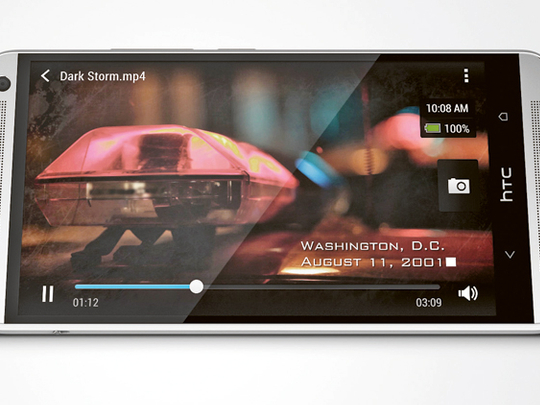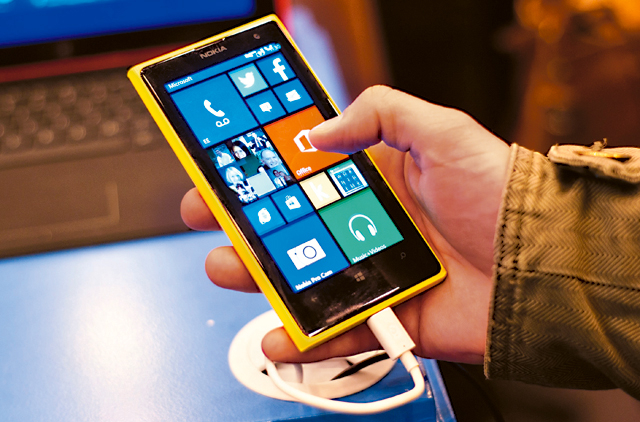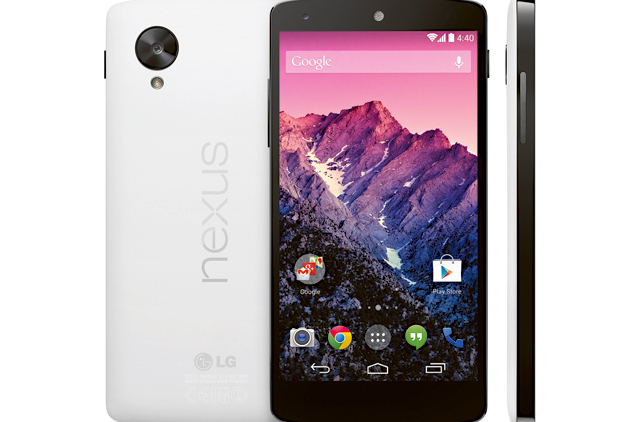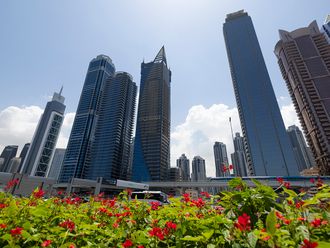
HTC One Max
The best just got better
HTC is known for its solid build quality and the One Max does not disappoint. It measures 164.5x82.5x10.29 millimetres and weighs 217 grams. Its screen measures 5.9 inches as against the 4.7 inches of the HTC One — it is about 20 per cent bigger and 50 per cent heavier than its predecessor. The Galaxy Note looks tiny in front of it.
The One Max is powered by a 1.7-gigahertz (GHz) quad-core Snapdragon 600 processor with two gigabytes (GB) of RAM. It is available in 16- and 32-GB models, with a microSD memory card slot for an additional 64GB of storage.
The best bit about the HTC One was its camera — a 4-ultra-pixel gem with numerous features that made smartphone photography more fun and Instagram more bearable. The camera returns with the One Max and features five levels of flash, 1080p Full-HD video, HTC Zoe and slow-motion video recording. The front camera is HDR-equipped and has 2.1 mega pixels (MP), with an 88-degree wide-angle lens capable of 1080p Full-HD video recording.
Besides HTC Zoe, where the camera buffers so that you can even capture photos from a second before you pressed the shutter, and the crystal-clear HTC BoomSound, the phone also features an advanced version of the Flipboard-killing HTC BlinkFeed. Users can add custom topic categories to BlinkFeed and save more than 100 full-length features and articles for offline reading.
Lastly, the device features a fingerprint scanner on the rear of the phone. Users have the option to scan and save all their fingerprints, and the best part of that feature is that you can set each print to open a different application when you swipe your finger across the back.
Another additional boon is its Kid Mode — or Girlfriend Mode as I like to call it. Users can save their partner’s (or children’) fingerprints on the phone and then customise a set of boundaries restricting access to certain parts of the phone. Nice.
— Gareth Kurt Warren/Features Writer
Nokia Lumia 1020
All hail the camone
So Nokia’s new camera allows you to send and receive messages, make phone calls and surf the worldwide web.
It’s a smartphone of course, but you just can’t get past the fact that the Lumia 1020 looks and behaves like a camera with a bit of extra technology woven into its fabric.
Building on the 808 Pureview, the first Nokia smartphone to offer a 41MP camera, the 1020 may just be the first legit camera phone — a camone (I’ve just copyrighted that word).
The switch to Windows 8 Amber from the old Symbian OS renders this device a more all-round smartphone. But the main attraction is unsurprisingly the super high-definition clicker.
Packing 41MP into a phone is a wise move given the prevalence and continued demand for a smart device that offers click-and-post of the highest standard. And with Instagram going at a price of $1 billion (about Dh3.67 billion) last year, the evidence for improving smartphone camera capabilities is obvious.
It is a stunning snapper that offers unrivalled colour and detail, as Nokia have pumped the majority of their resources into making this an unbeatable product for the smartphone camera market.
The 41-MP sensor uses 1.1-micron back-side-illuminated pixels, which permits a bigger space to capture light. If you take a picture of a vast landscape and then want to crop the image to just a small area of the shot, the cropped image will still be in high-resolution, always handy for those media bunnies using their phones to capture live events that need to be later used in print.
In terms of the phone’s hardware, the slightly protruding lens on the back of the device makes it an oft awkward item to stow away and use. But there has to be some leeway here given the amount of technology crammed into the shutter.
One-handed use is more tricky than with other Apple, HTC and Samsung products on the market, but buyers of the Lumia will be less inclined to worry about one-handed ergonomics than they will be with the performance of the camera.
The OS is vastly improved and the simple Windows interface is easy enough to acclimatise to, and to navigate and use speedily.
All in all, a super camera that will benefit from future Windows software developments when they arrive.
— Thomas Billinghurst/Features Writer
Nexus 5
Google takes on Apple and Samsung
The Nexus 5, which went on sale this month, features a vibrant 5-inch screen. The LG-manufactured smartphone can also connect to LTE networks, an attribute not shared with its predecessor, and has been packed with Android 4.4 KitKat, the latest version of Google’s mobile OS.
The Nexus 5’s display is bigger than the Nexus 4’s, and has a higher resolution. It boasts a 1080p Full-HD display, and the difference is noticeable. The screen has also improved thanks to software changes. In KitKat, the notification bar atop the screen and the on-screen buttons at the bottom are now translucent, giving more real estate to whatever app, website or game a user is looking at.
The Nexus 5 combines LTE capabilities with a 2.26GHz Qualcomm Snapdragon 800 processor. If speed matters to you, the Nexus 5 is a great option.
The phone app will also try to arrange your favourite contacts based on the people you call most. You can also search for the phone numbers of nearby places, such as a store or restaurant. Type the name of the place and once it shows up in the results, you can tap its name and the Nexus 5 will call it. Google has replaced its messaging app with the Hangouts app, which makes it easier to keep all your conversations — text messages and conversations through Gmail and Google+ using Hangouts — in one app.
It features an 8-MP rear camera and a 1.3-MP front camera, same as the Nexus 4. Both get the job done, but are inferior to cameras on other devices, including the iPhone 5S and Galaxy S4.
— Los Angeles Times














